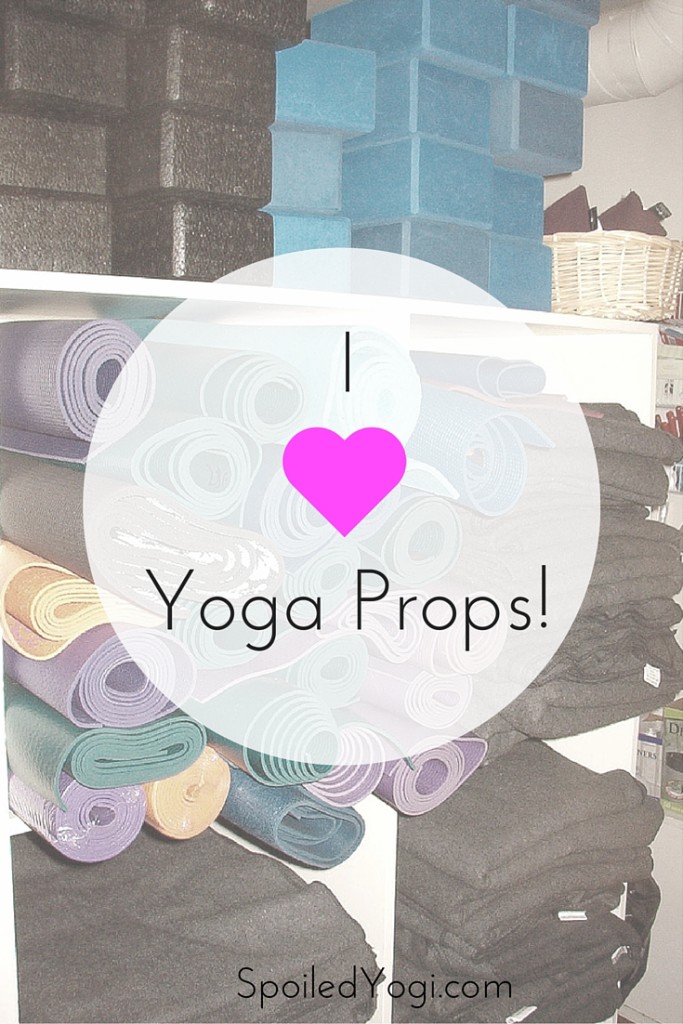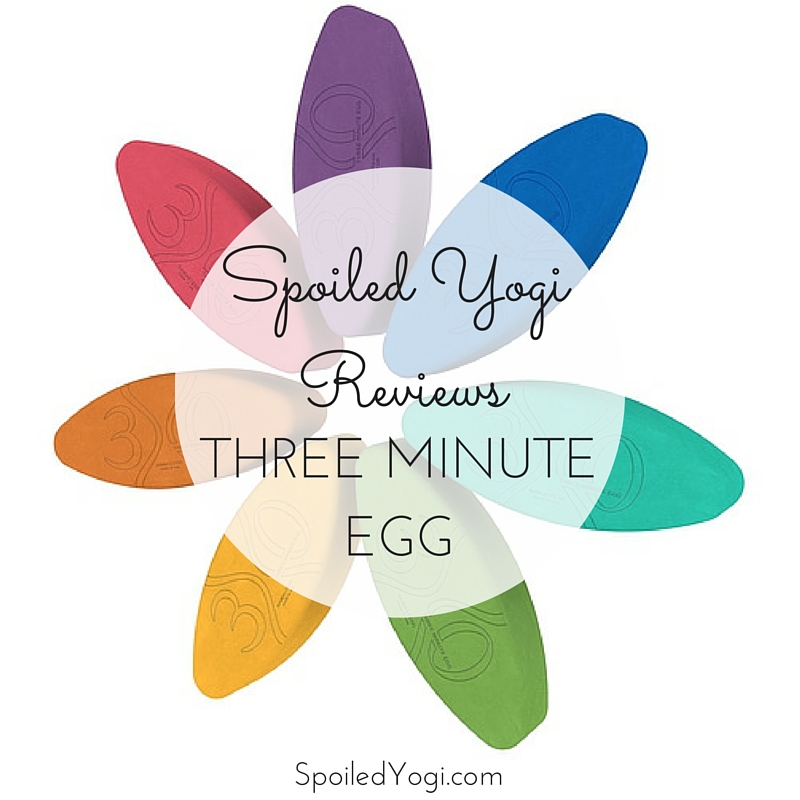It’s kind of funny that I’m so obsessed with yoga blocks now because when I first started practicing yoga teachers had to practically force me to use them. Like many beginners, I didn’t want to use blocks (or really any props) because I thought they were for people who weren’t flexible enough/weren’t strong enough ie. not good at yoga. (I know it’s hard for you to understand, my dear readers. But I wasn’t always so wise and knowledgeable as I am today. I was once a naive, sheltered, and, well, ego-tastic. I’m still working on it. Ha!)
A Story about Yoga Props
Once upon a time, a teacher brought a block over to me during a standing pose like Trikonasana (Triangle Pose) and put it down next to me. I pretended not to see her. She inched it closer. I thought if I avoided eye contact, maybe she’d just go away and help someone who actually needed her help. Finally, my teacher let out an exasperated sigh, put the block right in my face and said, “Here! You need this block! Put it under your hand!” It was awkward and I remember being completely mortified (and maybe a little angry, too)… But I’m glad she persisted because props have definitely transformed my asana practice in many ways.

| Photo by Celeste Lindell |
Yoga Props: A Love Story
Now that I’ve been around the block (pun intended) a time or two, I’ve seen so many ways that props can actually increase the challenge, too. I’ve learned that props (I’m talking about blocks, straps, blankets, bolsters, wedges, and sandbags, too!) aren’t just for building flexibility and strength, but can help you to build awareness, which is a much more important thing to build, really.
See also 5 Yoga Props Every Beginning Yoga Student Should Have
Sometimes props help me relax. Sometimes they pad my fall when I lose my balance and ball right on my face. Sometimes they challenge me to work new muscles or work the ones I’m already working in new ways. Sometimes my support me when I’m tired. They help me to individualize my practice to suit my energy level or abilities on that particular day. Whatever I need for my practice in that day, my props help me accomplish.
Look, what I’m trying to say is this: I Props are my boo!
I don’t know how I ever lived without them! But, what can I say? You live and you learn.
Review: Three Minute Egg

Recently, I’ve been learning with a new kind of prop (new to me, anyway): Foam yoga blocks that are shaped like eggs. Here’s what I really love about the Three Minute Eggs: I’s impossible to put all of your weight on them. This is particularly useful if you use a traditional block under your right hand in, say, Trikonasana, and you notice that that right shoulder often seems to make its way into your right ear.
| Trikonasana (Triangle Pose) |
Pros:
- It’s lightweight, so it’s easy to carry from one side of your mat to the other or from home to studio… Bonus: If you accidentally drop it on your toe, it probably won’t turn your toenail black (Yes, this does happen with heavy wooden blocks—I write from experience!).
- Its design makes it impossible to collapse your weight on it when you use one for support in standing poses, which means you have to engage your core a bit more.
- That also means that when you use it during standing poses, your shoulder won’t rise up to your ear creating unnecessary tension into the shoulder and neck.
- The egg-shaped design makes it more comfortable than rectangle blocks to lay over for gentle heart openers. And, for my body, it is just the right amount of openness, too.
- Because there are no sharp corners, they provide more comfortable support for your knees in Baddha Konasana (Cobbler’s Pose) or Supta Baddha Konasana (Reclining Cobbler’s Pose).
Cons:
- As much as I’ve enjoyed practicing with the 3 Minute Eggs, I wouldn’t give up my traditional blocks completely. (I need still need the stability of rectangle cork blocks for practicing my Ashtanga jump throughs, etc.) So, having two sets of blocks takes up a bit more space.

Comments